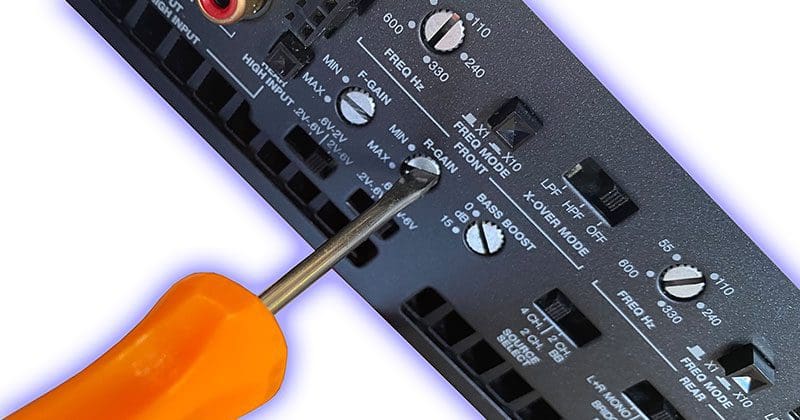If you’ve browsed amateur car audio groups on Facebook, you’ve likely seen someone post that they have “set the gains halfway” on their amplifier. Their misguided theory is that this setting will limit the maximum amount of power the amplifier will produce. Saying this in the presence of a professional installer is the best way to announce that you don’t really know how the sensitivity control on your amplifier should be set to optimize its output capabilities and minimize the noise in your car audio system. Confused? No worries, we’re here to help explain it all.
What Does the Gain Control Do on a Car Audio Amplifier?
Imagine a world where every car radio provided the exact same preamp output voltage at full volume. If you play a song that reaches the maximum allowable recording level for the medium you’re using (CD, cassette, digital audio file or whatever), and you have the volume control on the radio turned up all the way, then you might get a signal that peaks at 2 volts. In this scenario, every amplifier on the market could be configured to produce its maximum rated power when it sees 2 volts of input signal.
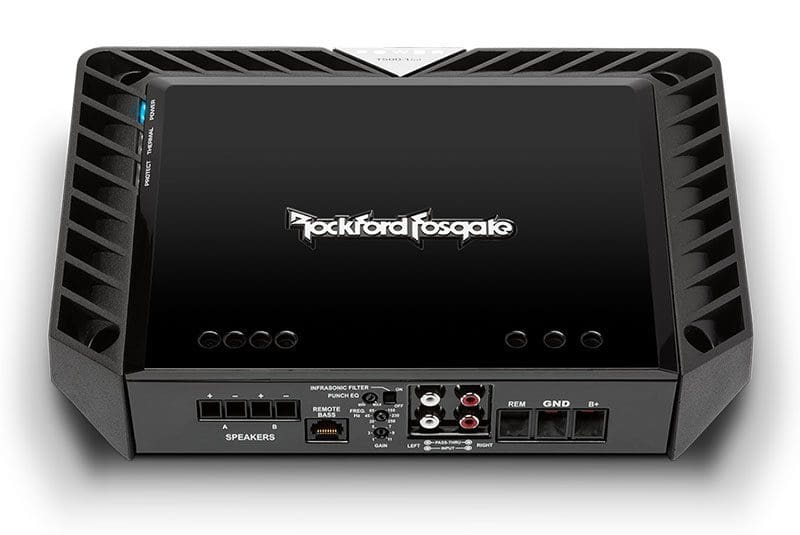
In reality, the sources we use to play our music vary dramatically in their output capabilities. An iPod might produce 330 millivolts. An inexpensive radio is likely capable of producing around 2 volts, and a higher-end multimedia receiver or a good DSP might reach or exceed 5 volts. Ignoring the need to balance the relative output level between a subwoofer and midrange speakers (for now), we need an amplifier that can produce full power with signals that vary from few hundred millivolts up to more than 5 volts. The sensitivity control on car audio amplifiers is the adjustment that lets a properly trained technician configure the amp to make its maximum rated power from a variety of sources.
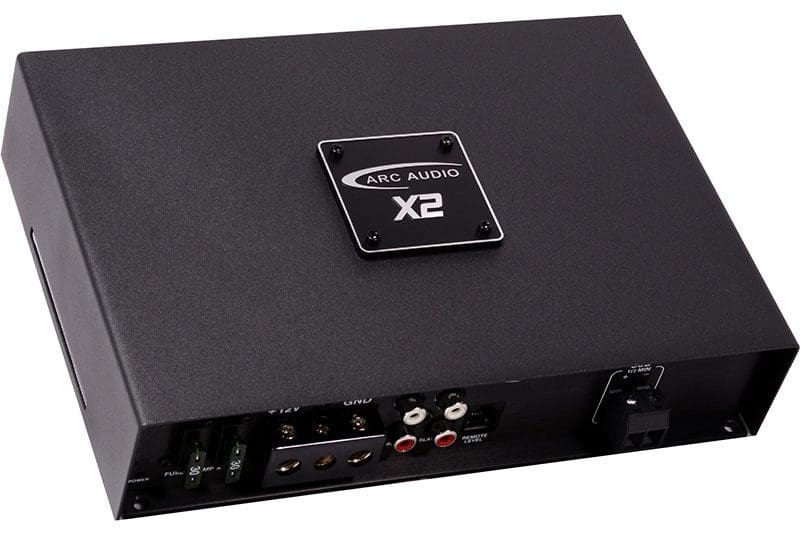
Why Setting Gains Is Crucial
Let’s start with a simple example. You’ve had a subwoofer system installed in your vehicle and you’ve chosen a 500-watt amplifier to drive a pair of subwoofers that are rated to handle 250 watts of power. In the simplest scenario, the technician installing the system should set the sensitivity control on your amplifier so that the amp clips a tiny bit when you max out the volume on a radio that can produce 2 volts of output. If the amplifier is rated to work with sources ranging from 150 mV to 4 volts, then a setting around 2 volts or around 20% from its minimum sensitivity will be pretty close. The technician will check to make sure that the type of music you enjoy will play loudly, then send you on your way to enjoy your upgrade.
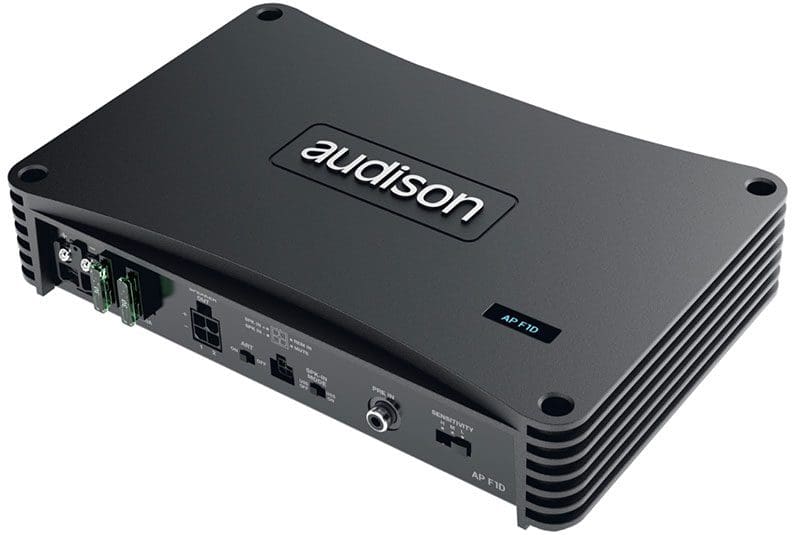
Suppose you decide at a later date to update your audio system with a premium multimedia receiver that includes Apple CarPlay and Android Auto. In that case, you might find that it can provide 4 or 5 volts of output on the preamp connections. With this unit in place, the sensitivity controls on your amp are too high, and it would be easy to drive it into clipping. The amp needs to be turned down to just about its lowest sensitivity to make full power at full volume.

The Drawback of Too Much Gain
If you are attentive to listening for significant distortion being added by pushing your amp to the point that it clips, then theoretically, you could leave the sensitivity control at 20%. By lowering it, the amp will add less unwanted noise to the system, and you don’t have to worry about how high you turn the volume. That said, it’s hard not to want to turn the volume up when your favorite song comes on. Noise isn’t much of a consideration with a subwoofer amp, but low- to moderate-quality amplifiers can add a lot of hiss with the gains cranked up when driving coaxial or component speakers.
Amp Gains and Maximum Power Delivery
The correlation between the setting on your amp and how much power is produced is based purely on how much signal is sent to your amp. If you have an extremely low-voltage source like an iPod, then the amp may need to be set at 75% to 85% of its maximum. In this case, turning the amp back to 50% WILL reduce how much power it produces. If the amp is optimized at 25%, then turning it to its minimum will also reduce power.
To state that an amplifier is set “halfway” ignores the variables of source unit output voltages, volume settings, source material loudness, system equalization and the impedance of the load connected to the amp. If you only need 10% of an amp’s gain capabilities, setting it to 50% doesn’t make sense, and it certainly doesn’t limit the amplifier to half its power production capabilities.
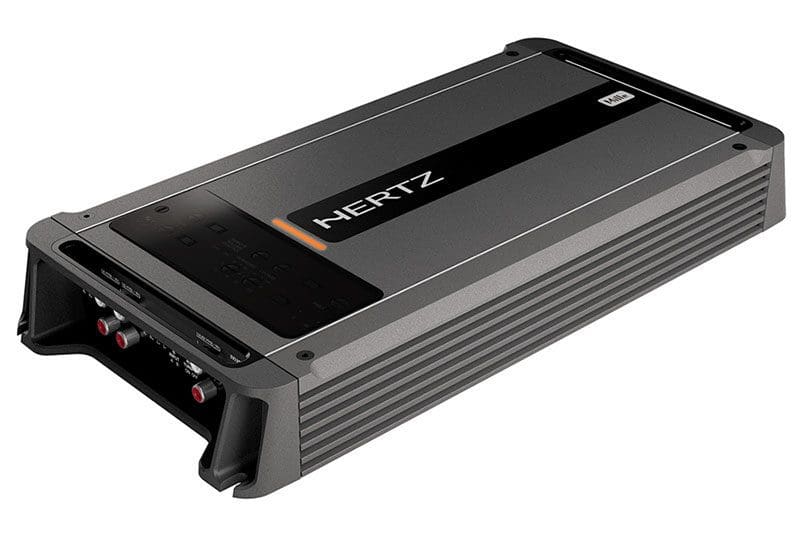
It’s Much More Complicated
The sensitivity control is also used to balance the relationship between speaker output levels in actively filtered car audio systems. If you have a 500-watt amplifier for your subwoofer and a 50-watts-per-channel amplifier for your door speakers, setting both so that they clip simultaneously might not deliver an overall system balance that’s ideal. Of course, the design of the audio system matters. If you’re running one 8-inch sub in an acoustic suspension (sealed) enclosure or a pair of 12’s in a bass-reflex (vented) enclosure also plays a huge role in how things will be configured. You also need to take into account that the amp for the door speakers is likely only going to play down to about 80 Hz. Crossover settings complicate the calibration process even further and render tools like an oscilloscope useless without the proper test tracks.
Let’s wrap this up with another example. Say you’re using a high-quality digital signal processor that can provide as much as 8 volts of output to your amplifier. It’s quite likely that you can provide more than enough voltage to drive that amp to or beyond the point that it will add distortion from clipping to the output, even with the amp gain set to its minimum setting. Consider the flawed logic of saying, “I’ll only get half the power if the set the gain halfway.” The reality is, the amp will likely reach its maximum output capability at half to three-quarters of the maximum volume on the radio. If you turn the volume up further, you are just adding distortion to the output signal and risk overpowering the speakers or subwoofers.
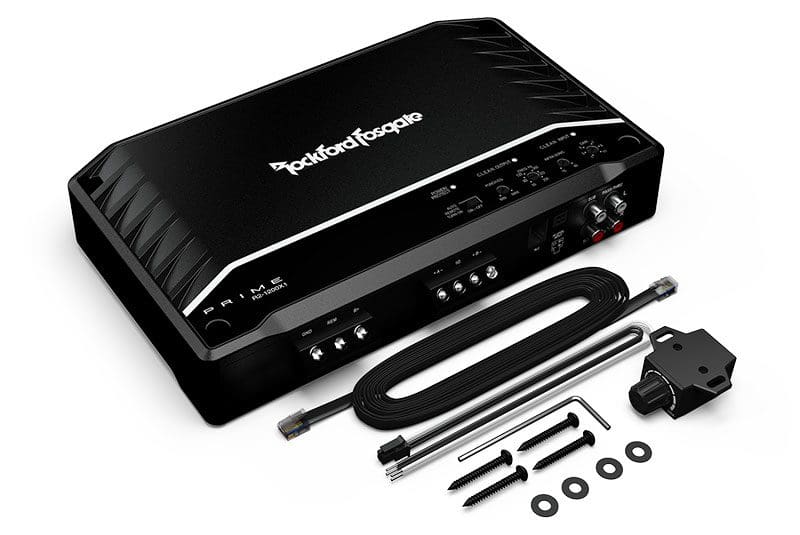
Our second and equally illogical example would be a scenario where you have an amplifier that’s capable of overpowering your speakers. Imagine a subwoofer rated for 200 watts connected to an amplifier that could produce 1,000 watts. Is “setting the gain at half” going to protect this sub from damage? If you have an audio source with extremely limited output voltage, maybe. Suppose you have a source capable of producing more than a couple volts, then nope. You’ll likely destroy it.
If you’re starting to get the impression that setting the gain correctly in a car audio system with multiple amplifiers isn’t as simple as you first thought, then this article has served its purpose. It’s a complicated process that requires the technician working on your vehicle to consider many factors. More importantly, if you’ve damaged a set of speakers by overheating the voice coils, you’ve overpowered them. Too much power produces too much heat. That’s it. Period. There’s no other reason this happens. It doesn’t matter how your amp was set. You melted them.
If you’re having problems with your car audio system, look for a qualified specialty mobile enhancement retailer in your area to help configure your system properly or help you choose a combination of components that will work together to deliver the performance you want.
This article is written and produced by the team at www.BestCarAudio.com. Reproduction or use of any kind is prohibited without the express written permission of 1sixty8 media.
